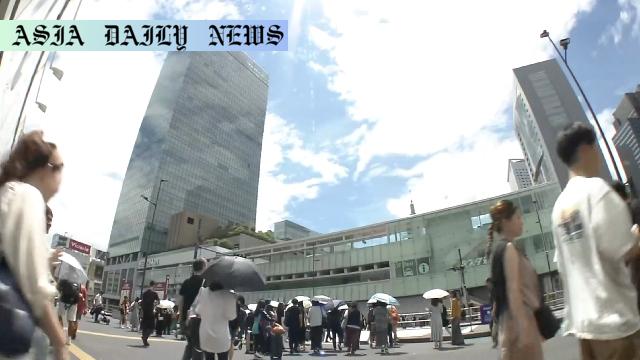Heatwave grips Japan as cities forecast temperatures up to 39°C, with heatstroke alerts issued across 38 prefectures.
Heatwave grips Japan, with highs of 39°C expected in various cities.
Heatstroke alerts issued for 38 prefectures as temperatures rise.
Isesaki City saw life-threatening 40°C for four consecutive days.

Japan Faces Unrelenting Heatwave with Life-Threatening Temperatures
Japan is currently grappling with one of its most intense heatwaves, as temperatures soar to critical levels across the country. The Japan Meteorological Agency has issued warnings as a vast high-pressure system blankets the region, causing prolonged spells of sizzling weather. Sunday marks another day where temperatures are expected to reach dangerous highs, with forecasts predicting 39 degrees Celsius in Yamaguchi City and 38 degrees in cities like Kofu, Nagoya, Osaka, and Hiroshima’s Shobara City.
Alarmingly, heatstroke alerts have been activated in 38 of Japan’s 47 prefectures, stretching from Kanto-Koshinetsu all the way to Okinawa. Residents in regions such as Maebashi City and Isesaki City, both located in Gunma Prefecture, faced extraordinary highs of 40 degrees Celsius for four consecutive days – a phenomenon mentioned to be the first since August 2013. This heat spell poses significant risks as individuals are highly vulnerable to severe dehydration and heatstroke, especially when temperatures rise above 40°C.
Precautionary Measures and Public Safety Advisory
Authorities are urging individuals to prioritize safety during these potentially life-threatening conditions. The public is advised to use air conditioning where possible, stay hydrated, and consume sufficient amounts of salt to replenish electrolytes. Frequent breaks are essential for outdoor workers, and people are encouraged to minimize physical activity during peak heat hours. This guidance is critical as prolonged exposure to such extreme temperatures can have irreversible health implications.
Efforts to disseminate awareness about heatstroke prevention are in full swing. Officials emphasize adopting a proactive approach to well-being, especially among vulnerable populations like the elderly and young children. This proactive stance also seeks to reduce strain on healthcare facilities, which are already stretched thin due to heatwave-related illnesses.
Global Heatwave Concerns and Climate Implications
Japan’s current weather crisis is part of a broader trend of escalating global temperatures linked to climate change. These episodes of extreme weather underscore the urgent need for decisive action on climate policies and the reduction of greenhouse gas emissions. With urban areas bearing the brunt of heatwaves due to heat island effects, cities such as Tokyo, Osaka, and Nagoya must also invest in urban cooling solutions like green spaces, reflective surfaces, and infrastructure modifications tailored to combat high temperatures.
Additionally, Japan’s situation serves as a stark reminder for other countries to ramp up preparedness for extreme heat. This includes not only better public education but also comprehensive infrastructural readiness to ensure health, water security, and power stability during prolonged heatwave conditions.
Way Forward: Building Resilience for the Future
As Japan endures this unprecedented heatwave, it highlights the importance of climate resilience and governance that prioritizes adaptation strategies. Governments at the local and national level must collaborate to address the multifaceted challenges posed by rising temperatures, including the necessity of updated building codes, renewable energy adoption, and contingency planning for emergency scenarios.
Equally important is the role of individual responsibility. Conserving energy, practicing sustainable habits, and staying informed are key actions that all citizens can take to mitigate and adapt to these extreme weather conditions. Together, society can navigate toward a future that balances the goals of environmental stewardship and the advancement of public health outcomes.
Commentary
An Alarming Crisis That Demands Immediate Attention
The events unfolding in Japan due to the ongoing heatwave highlight a critical gap in preparedness for extreme weather conditions. The fact that temperatures have crossed the dangerous 40°C mark for several consecutive days is not just alarming but life-threatening. The world must sit up and take note of Japan’s situation, as it is a harbinger of what could become a recurring phenomenon in other parts of the globe as well.
The Impact on Daily Life and Community
While the general public endures significant daily challenges in coping with such extreme heat, it is worrying to see how vulnerable populations such as the elderly, children, and outdoor workers are disproportionately affected. This heatwave is not just a natural phenomenon but a public health emergency. Communities need to come together, along with governmental bodies, to provide support systems that ensure adequate access to cooling facilities, clean drinking water, and emergency medical care.
Lessons from Japan’s Experience
Japan’s plight is a critical lesson for policymakers across the globe. Climate adaptation efforts must go beyond policy discussions and be implemented as tangible solutions. Empowering communities with resources, creating urban designs that account for rising temperatures, and adopting renewable energy sources are non-negotiable steps to prevent such losses. Japan’s ability to navigate this crisis will serve as a crucial case study for nations grappling with similar risks from global warming.
Path Forward
In conclusion, this intense heatwave is a wake-up call for humanity to collectively address the looming threat of climate change. The need for robust disaster preparedness systems and sustainable urban planning has never been more evident. Collective resilience, backed by decisive action, is the only way forward. Japan’s current challenges could inspire global movements to prioritize resilience against extreme weather events.


